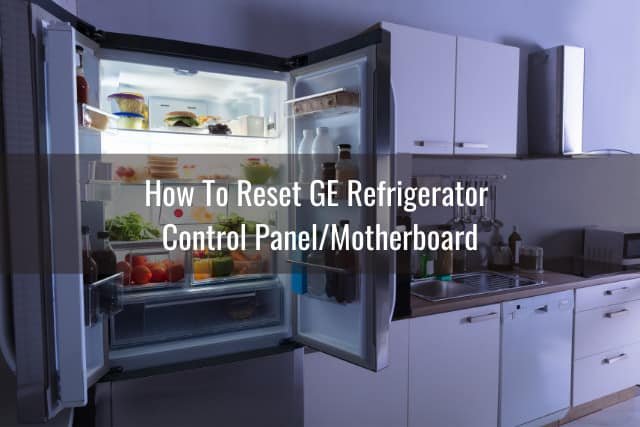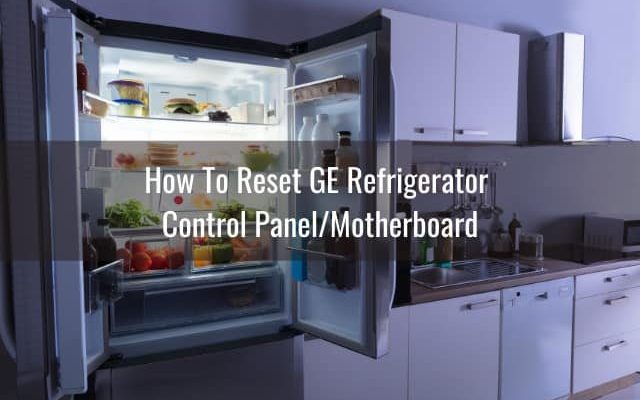
The E3 error code typically indicates a problem with the defrost system of your GE refrigerator. This could mean the defrost heater, thermostat, or the actual control board isn’t doing its job. But don’t worry—much like your phone needing a restart when it’s acting up, your fridge might just need a reset. Think of it as giving your fridge a brief nap to allow its system to reboot and shake off any minor glitches causing the error. Now, let’s dive into how you can reset your GE refrigerator and potentially fix this error.
Understanding the E3 Error Code
So, what exactly does this E3 error code mean? Well, it’s your GE refrigerator’s way of letting you know that there might be an issue with its defrost system. This system is crucial because it keeps your fridge from turning into a winter wonderland by regularly melting away any frost buildup. If the defrost system isn’t working properly, it can lead to excessive frost, which can block airflow and ultimately mess with your fridge’s cooling capabilities.
Think of the defrost system like the windshield defroster in your car. Without it, you’d eventually lose visibility, and in the case of your fridge, it would lose its ability to keep things cold. The E3 code usually pops up when the refrigerator senses that the defrost cycle isn’t being completed properly. This could be due to a faulty defrost heater, a broken defrost thermostat, or even a problem with the wiring or control board. But before you start imagining a pile of parts, let’s explore a simple reset.
While it might seem daunting, understanding that the E3 error revolves around defrost issues can help you take the first step toward fixing it. Before calling for professional help, which can be costly, resetting your refrigerator is a simple approach that might solve the problem.
Resetting Your GE Refrigerator
Okay, here’s the deal. Resetting your GE refrigerator after encountering an E3 error is often as straightforward as flipping a switch. The first thing you need to do is locate the power cord. It’s typically at the back of your fridge. Unplug it gently, giving your fridge a moment to take a breather. Just like you might when resetting a troublesome computer, you’re essentially giving your fridge a fresh start.
Once unplugged, you’ll want to wait for a few minutes—five should do the trick. During this time, grab a cup of coffee, take a breather yourself, and relax. This pause allows any lingering electricity within the fridge to dissipate, ensuring a clean reboot. Then, plug the cord back into the power outlet, and power it up. This act essentially clears out any temporary glitches in the system that might be causing the error.
After plugging it back in, check if the E3 error has disappeared. Sometimes, your fridge just needs this little bit of downtime to straighten things out. If the error persists after you’ve reset it, it might be time to dive a bit deeper into the potential causes or consider reaching out for professional help.
Troubleshooting Persistent E3 Errors
If resetting the fridge doesn’t make the E3 error go away, let’s consider a few more steps. Your fridge is telling you that its defrost process isn’t completing as it should, which means it might be time to inspect some internal components. Remember, this is like checking why that faucet won’t stop dripping even after you’ve tightened it.
One possibility is a faulty defrost heater. This component is responsible for, you guessed it, melting any frost buildup. If it’s not working, frost can accumulate and fool your fridge into thinking there’s a problem. Depending on your comfort level with appliance repair, you can use an ohmmeter to check for continuity in the defrost heater. No worries if that sounds a bit too technical—you might prefer to call in a professional to help out here.
The defrost thermostat is another suspect. It’s like a thermostat in a house, maintaining a balance between too little defrosting and too much. If it’s malfunctioning, the defrost cycle can get stuck. Inspecting or replacing this part often resolves the problem. Lastly, the control board, which is like your fridge’s brain, could be the issue. If this is the case, swapping it out might be the only fix.
Preventing Future E3 Errors
Now that you’re on the path to recovery from the E3 error, let’s talk about some preventative measures. Think of this as regular maintenance, just like changing the oil in your car. Keeping your fridge running smoothly is all about catching small issues before they become big problems.
Regularly checking and cleaning your refrigerator’s coils can help maintain efficient cooling. Dust and debris can accumulate over time, much like how lint builds up in a dryer filter. Keeping these clean reduces stress on the fridge system. Also, make sure the door seals are tight. Over time, seals can wear down, letting warm air in and forcing the fridge to work harder than it should.
Moreover, don’t overload your fridge. A crowded fridge blocks cool air circulation and can lead to certain areas getting frostier than others. It’s also a good idea to occasionally check for updates in your fridge’s manual or online—manufacturers sometimes release new guidance or firmware updates.
To sum up, addressing the E3 error in your GE refrigerator starts with a simple reset. But if the error persists, inspecting key defrost components might be necessary. By following these troubleshooting steps and maintaining your fridge’s health, you can keep things cool and avoid issues in the future.
